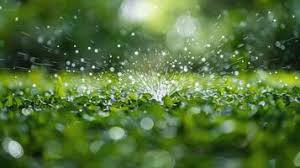Pakistan, with its diverse climate and rich cultural heritage, offers a unique canvas for creating stunning outdoor spaces. However, the country’s arid and semi-arid regions present challenges for maintaining lush landscapes. By combining effective landscaping techniques with efficient irrigation systems, you can transform your outdoor space into a vibrant oasis.
Understanding Pakistan’s Climate and Soil Conditions
Before embarking on your landscaping journey, it’s crucial to understand Pakistan’s diverse climatic conditions. From the humid coastal regions to the arid inland areas, the country experiences a wide range of weather patterns. Additionally, the soil types vary significantly, influencing plant growth and water retention.
Choosing the Right Plants
Selecting suitable plant species is essential for a thriving landscape. Opt for drought-tolerant plants that are well-adapted to Pakistan’s climate. Consider the following:
- Native Plants: Indigenous plants are well-suited to local conditions and require minimal maintenance.
- Succulents and Cacti: These low-maintenance plants thrive in arid environments.
- Ornamental Grasses: Grasses add texture and color to your landscape while requiring minimal water.
- Fruit Trees: Citrus, pomegranate, and olive trees can provide shade and delicious fruits.
Efficient Irrigation Systems
- Drip Irrigation: This highly efficient system delivers water directly to the root zone of plants, minimizing water loss through evaporation. It’s ideal for trees, shrubs, and flower beds.
- Soaker Hoses: These hoses slowly release water, making them suitable for vegetable gardens and flower beds.
- Sprinkler Systems: While less efficient than drip irrigation, sprinklers can be useful for lawns and areas with high water demand. However, it’s important to use them judiciously to avoid water waste.
Water-Wise Landscaping Techniques
- Mulching: Apply a layer of organic mulch around plants to retain soil moisture, suppress weeds, and regulate soil temperature.
- Container Gardening: Grow plants in containers, which allows for better control of soil moisture and nutrient levels.
- Rainwater Harvesting: Collect rainwater and use it to irrigate your garden.
- Xeriscaping: Design your landscape to minimize water usage by incorporating drought-tolerant plants, efficient irrigation, and hardscaping elements.
Maintenance and Care
Regular Pruning:
Prune plants to remove dead or diseased branches and encourage healthy growth.
Fertilization:
Apply a balanced fertilizer to provide essential nutrients to your plants.
Weed Control:
Regularly remove weeds to prevent competition for water and nutrients.
Pest and Disease Management:
Monitor your plants for pests and diseases and take appropriate action.
Conclusion
By understanding Pakistan’s unique climatic and soil conditions, selecting appropriate plants, and implementing efficient irrigation techniques, you can create a sustainable and beautiful outdoor space. Remember, a well-planned and maintained landscape not only enhances the aesthetic appeal of your property but also contributes to environmental conservation.



